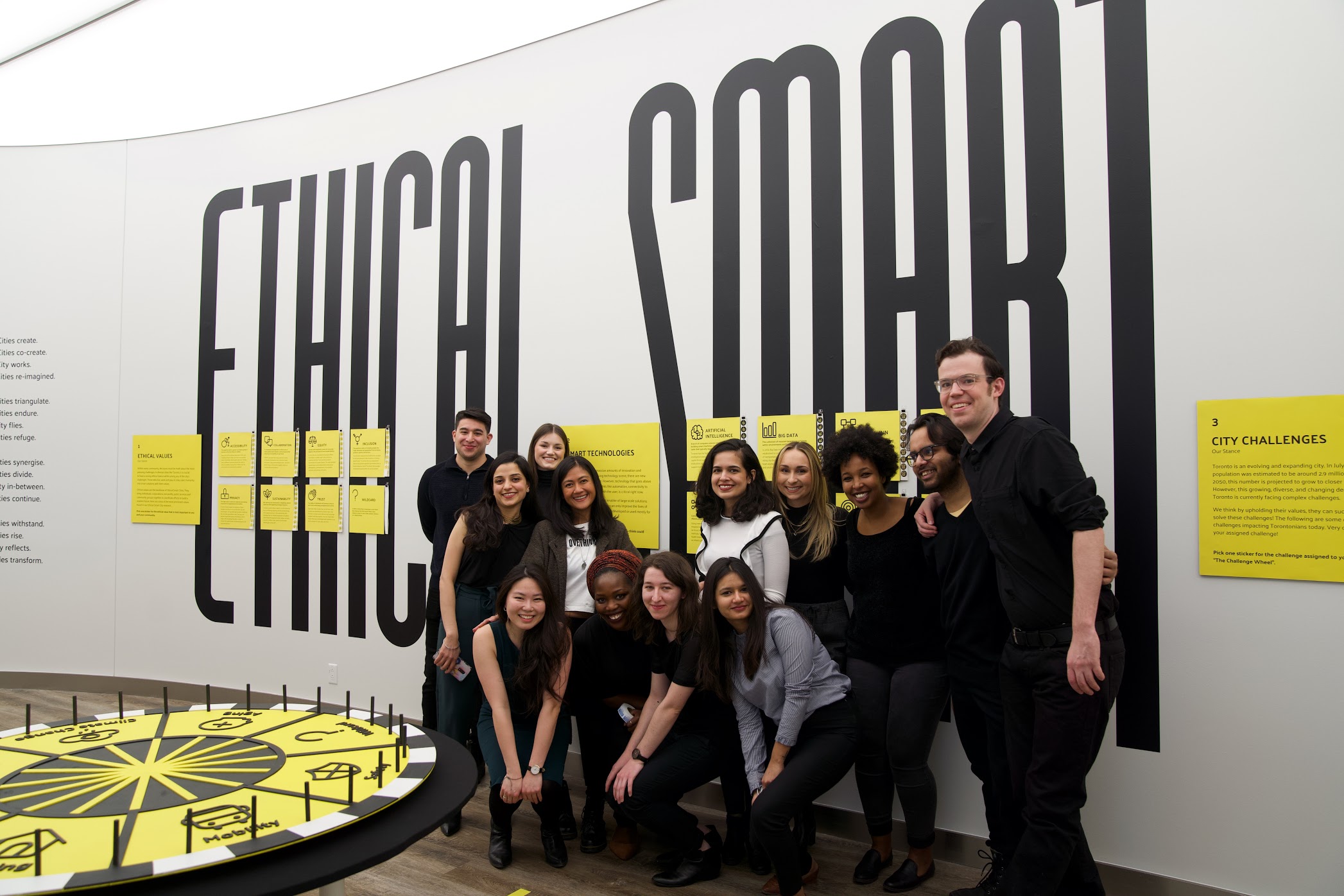Two semesters separated by December holidays. A group that wanted to do everything. Limitations of time and space. And, how everything came together to create an award-winning exhibition for DesignTO Festival.
Put together for the DesignTO festival, Playroom.TO was a multi-sensorial experience. The exhibit opened two weeks after the start of our second term, which meant we had just the time for the production of assets for the exhibition. Coming back from a holiday, jetlagged and sick, I had a rough start trying to get in the groove of testing designs, writing content, and planning for the build phase. Playroom.TO was the first public platform for the Ethical Smart City concept and putting together this experience refined our concepts and the overall direction for the project. For me, this experience championed the value of design strategy, the importance of simple user experience, and the role of collaboration in design.
The concept and the strategy behind the design were supposed to be the output of one of our modules from Semester one; however, due to myriad factors the group was unable to fully agree on one concept. When the group convened in January for Semester two, after a three week break, the lack of an agreed-upon concept became the first hurdle to cross. At this point, what we did have were a number of insights from our research and didn’t know which one to prioritize. Deciding on a concept that focuses on the Ethical Smart City elements and explaining it through an interactive experience helped in making decisions for everything else. Narrowing down our scope to a cohesive strategy enabled us to curate the experience in a unique way. The design strategy provided the pivot for all teams (content, design and build) to create assets that can contribute to our desired output.
This strategy also helped us think about the experience we wanted to convey with our audience. We had always wanted to use the exhibit to test our insights and gather information on how city challenges, community values, and available technology are thought of in a city. How well do people know what is valuable to them? How does it impact how they will solve challenges? What is the role of technology in this process? With the multiple layers of complexities in the Smart Cities conversation, what we needed was to design a simple experience that allowed us to validate our core understanding around the basic elements that make up an Ethical Smart City.
However, this need had to be felt by the entire group, which added another layer to the process that we had to navigate through. Collaboration is not an easy feat, especially if it is among 13 individuals with unique backgrounds and experiences. It was both a clash and a flow of talent, opinion and intention but it yielded results we could not have imagined or produced individually. The role of collaboration in the design process was evident in the experience of putting it together. There were complementary and contrasting points of view, every step of the way which ensured that design decisions were constantly balanced. With the guidance of our faculty and by streamlining the team’s internal resources at strategic points, we were able to create high-quality assets for the event. There were a lot of moving parts as different team outputs started taking shape. Dependencies of tasks became more evident when decisions had to be made that affected deliverables of either content, design, build or all teams. By managing our task list, we identified potential gaps and mitigated them without affecting other simultaneous processes.”
It was a learning experience that informed how we can improve our way of working, research, and the ESC Framework. This exhibit was the beginning of a rough and fulfilling six-month journey of creating something, knowing its value, and communicating that value to the primary audience it was built and designed for. Planning the Playroom.TO project allowed us to discover our potential as a group and our limitations as individuals. Just like a true family, there was genuine love and hate for each other in different parts of the process. A commitment to the process allowed us to freely express our aspirations, hurt, frustration and worries to each other because no one else can understand us but us.

